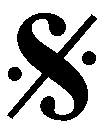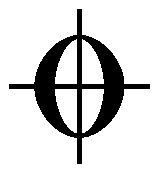Resources:
On paper, this repeat mark is quite complicated. It involves multiple symbols and jumping about over pages. It is very useful for saving space in a score though and tends to cover very large chunks of music.
When this method of repetition is used you will start at the beginning of the piece as normal and progress through until you hit a text note above the bar saying 'D.S. al coda'. 'D.S.' stands for 'Dal Segno, which is Italian for 'The Sign'. This is telling you to jump back in the music until you see a 'segno'. A segno looks like this:

When you have jumped back you will play from the segno until you see the text mark 'to coda' (coda being Italian for 'tail'). This is telling you to jump from this point to the bar with the 'coda' sign in it. A coda looks like this:

From here you just play through to the end.
This method of repeating is great for when the start of a song is repeated and there is a different end. For example if our song has the structure intro, verse, chorus, bridge, verse, chorus, outro. After the bridge we could put our 'D.S. al coda', our segno at the intro and our 'coda' on the outro. This would save having the verse and chorus written out again, thus allowing the score to be written on fewer pages. It also shows that you don't need to learn any new parts as they are repeated.
Let's run through a practical example. Download the two .pdf files linked above. What you have there is the same piece of music written with and without repeat notation. First of all notice how when repeats are used the piece fits nicely onto one page.
Look at the version of the piece with repeat marks used and I will talk through how the D.S. al coda works here. So you will start at the beginning of the piece at bar 1, which is next to where it says 'in.'. You then play through normally until you hit the bar with 'D.S. al coda' above it in bar 24, which is the end of the bridge. From here you will jump back to the 'segno', which is above bar 5, which is the start of the verse. You will play through from here until you see the words 'to coda' above the music, which happens in bar 20 at the end of the chorus. From here you jump to the coda, which is in bar 41 at the start of the 'm.8', and play through to the end.
Notice at our coda the bar number is '41' where you might expect it to be 25? This is to account for all the bars that appear in our repeated sections. The same idea applies to structure markings, if extra versions appear within a repeat mark, two verse markings will appear in the left hand margin, as you can see in the example piece given.
When the coda appears, extra space is usually put above it and the left hand margin is increased for that line to make it clearer where the coda is. You can also see this in the example piece given.
Spend some time comparing the two versions of this piece and getting your head around the D.S. al coda.

